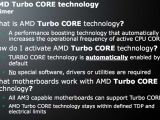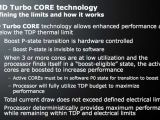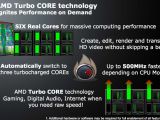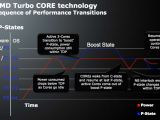When looking at Intel's various central processing units, AMD's DirectX 11 graphics cards, NVIDIA's Fermi adapters and the various innovations made in the fields of storage and memory, one could say that the past few months have been more than filled with innovative and standard-setting technology releases. Unfortunately, this long string of technological advancements may be coming to a close. The ATI Radeon HD 5000 series of graphics adapters is, more or less, complete, NVIDIA has released its own DirectX 11 cards, both AMD and Intel have launched new server processors and even the tablet and e-reader markets have seen a reasonably good start. In fact, with Intel's six-core already selling, AMD's Thuban series of six-core processors can be seen as the only major technological event that hasn't come to pass.
For some time now, Intel has been seen as the leader in CPU technology, mostly because of its Nehalem micro-architecture. As the basis for the chip giant's most powerful CPUs, this architecture enables the well known Turbo Boost technology, which automatically overclocks used cores and shuts down unused ones when applications demand it. This capability is what has, so far, enabled Intel's CPUs to perform better than those from Advanced Micro Devices.
Intel's Gulftown processor, otherwise known as the Core i7-980X, enabled the Santa Clara-based chip maker to become the first provider of six-core processors for consumers. However, the steep price of $999 doesn't exactly make the chip accessible for anyone except for enthusiasts, which is why the Thuban processors from Advanced Micro Devices are so highly anticipated.
AMD's Phenom II X6 series, besides a high-end part meant to take on the Gulftown, will also include models with much lower price points, each aimed at a specific market segment. Nevertheless, for a while, Intel's product seemed quite unreachable, mostly because, in addition to having a base clock speed of no less than 3.33GHz, it also supported the aforementioned Turbo Boost technology. This allure was finally, at least in part, dispersed when it was revealed that the Phenom II X6 would have a dynamic performance boost technology of its own.
Not much was disclosed about it at first, but later reports confirmed it as the Turbo Core technology. Predictably, this feature would work similarly to the Turbo Boost, in the way that it will overclock used cores at the expense of others. Until recently, the method was not elaborated upon. Now, the teams at HotHardware and AnandTech have come forth and detailed the procedure.
Turbo Core will be able to increase the operational frequencies of three active cores by up to 500MHz if an application can't use all six. All monitoring and clock/voltage management is exclusively handled by the CPU (with no need for special drivers or software), and is triggered not by temperature, but based on operating conditions and load demand. When power consumption is below the CPU's TDP, the technology puts the three used cores in a boost-enabled P-state.
This means that, should the application demand it, those cores will be able to increase their clocks by an amount dependent on the processing workload. This approach has more than one advantage. Since cores don't need to operate at the same frequency, each will only be pushed higher if the application warrants it. This means that no power will be spent on unnecessary overclocking. Secondly, when turbo Core is in effect, the clocks of the three unused cores is reduced to 800MHz and the power they normally use is diverted to the others. This allows dynamic overclocking to be achieved without exceeding the rated thermal design power (TDP). Finally, it should be noted that the Cool’n’Quiet (CnQ) technology will be operational throughout the entire process.
“What actually happens is that when CnQ looks to see if a set of cores should be downclocked, it also has the ability to increase the frequency of other cores,” AnandTech explains.
Turbo Core will be available on all upcoming Phenom II X6 processors and AM3 motherboards (after a BIOS update) and, while it may not be able to completely shut down idle cores like Turbo boost, it is still a step forward for the Sunnyvale, California-based chip developer. The chips themselves would make an appearance by June.

 14 DAY TRIAL //
14 DAY TRIAL // 



